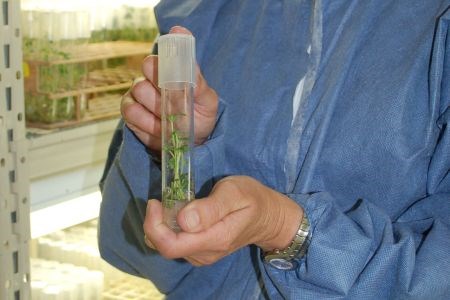The New Liskeard College of Agricultural Technology has been closed for 18 years, but its research centre continues to serve Northern Ontario.
The government consolidated all the agricultural colleges in the province in 1993, and New Liskeard's facility, along with its associated research station, was set to shut its doors.
“There was a big lobby effort since the research centre was for all of Northern Ontario,” said John Rowsell, manager of Northern stations. “So, the research component was reinstated the following year.”
Three years later, all agricultural colleges and research stations were divested to the University of Guelph and the New Liskeard Agricultural Research Station has continued its operations.
Prior to the 1930s, there was a demonstration farm in the area which also changed its role to a research function.
“They would bring in the best genetics of livestock and keep them here and then loan them out so people could improve their herds,” Rowsell said. “New lines of barley and wheat were selected and brought here to increase seed lots and then distributed to the local farms.”
That tradition of helping Northern Ontario farms improve hasn't stopped. Agronomy, beef and horticultural research programs are undertaken by the centre in laboratories, barns, fields and test plots.
The SPUD unit — superior plant upgrading and distribution — produces first-generation seed potatoes, strawberry and raspberry plants along with garlic and asparagus.
SPUD manager Becky Hughes said the unit conducts research and provides a service for Ontario growers.
In addition to the clean lab on site, there is research being conducted in the field in conjunction with other partners. For the past year, the project has focused on dayneutral strawberries from California and on raspberries.
“The dayneutral strawberries flower and fruit as long as the temperature stays between five and 25 degrees,” Hughes said. “In southern Ontario, the strawberries are not adapted to the heat there so that has been a challenge. However, here, we don't get the really hot July days like in the south so the strawberries keep flowering and fruiting until the fall.
“Our aim is to get six months of picking in Ontario.”
So far, with the help of a high tunnel, which is somewhat similar to a greenhouse, strawberries were available on the test plot until late October last year.
“The high tunnel was put up over our existing crop and we have found we get bigger yields and less rot,” she said.
Crops research includes cereal grains and forage and recently, a project has focused on biofuels.
“We have a plantation of hybrid poplars,” said Rowsell. “We are also looking at warm weather grasses like switch grass and comparing it to traditional grass to see if they can be pelletized for direct combustion.”
The centre studies disease control on crops since “new diseases are coming up all the time and we are constantly screening to keep ahead of them,” he said.
There has also been quite a bit of work on oats since ones grown in northeastern Ontario and northwestern Quebec are in demand.
“Specifications for oats for human consumption are quite tight and if there is a claim they are healthy, there has to be a low oil content,” Rowsell said. “And taste testing results show the ones from this region are better tasting as well.”
Beef research includes breeding studies and comparing animals finished in the pasture to those in the feed lot.
“We don't have beef researchers here but the projects are designed at the University of Guelph and we implement them,” he said.
A project started in the 1980s, out of necessity, has since been adopted by many farmers. Since there was not enough land to keep all the cows with the agricultural college, the herd was split into two groups.
The calves born in the barn during February and March were bigger, but more animals needed assistance with calving. The calves born on the pasture in June and July were smaller, but less intervention with calving was required.
“The ones on the pasture would go back to the barn in the winter and the calves were then ready to be put on grass and weaned for the next summer,” he said. “The ones born on the pasture would also catch up in size.”
Besides Rowsell and Hughes, fewer than 10 people work at the station, a far cry from the 60 staff the college once employed.
“We have a long history here,” Rowsell said. “Many don't know about the work we do but we certainly have a role to play.”




